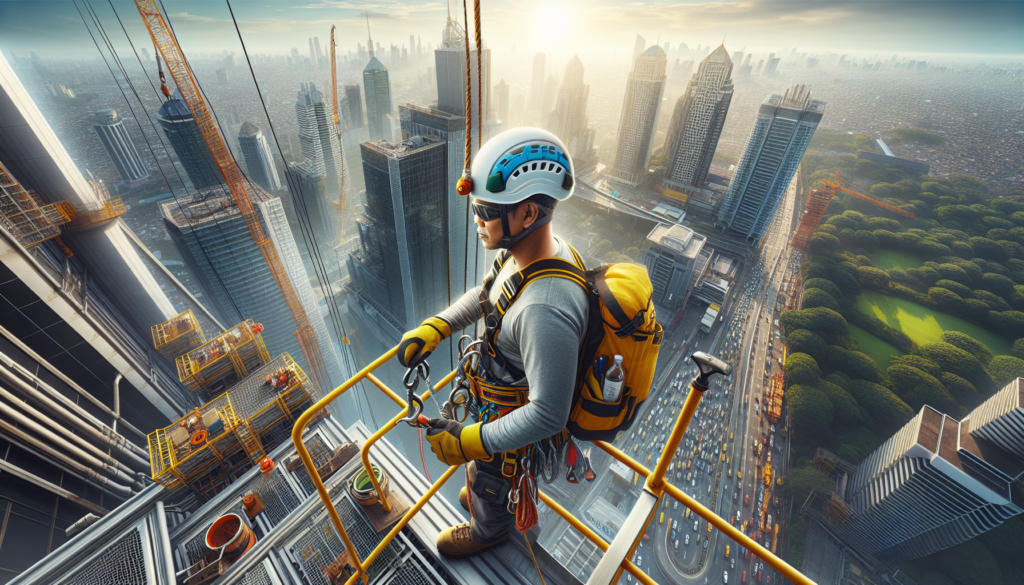The Comprehensive Guide to Safety Tethers: Ensuring Security in High-Risk Environments
Introduction
When it comes to working in high-risk environments such as construction sites, industrial facilities, or even rock climbing, safety should always be the top priority. One crucial tool that plays a key role in ensuring the safety of individuals in such settings is the safety tether. These simple yet highly effective devices are designed to prevent falls and accidents by securing individuals to a fixed point, thereby minimizing the risk of injury or even death.
But what exactly are safety tethers, and how do they work? In this comprehensive guide, we will delve deep into the world of safety tethers, exploring their history, applications, benefits, and controversies. Join us on this journey as we uncover the importance of safety tethers in ensuring security in high-risk environments.
The History of Safety Tethers
The concept of safety tethers dates back centuries, with early forms of safety harnesses and ropes being used by sailors and mountaineers to prevent falls. However, it wasn’t until the industrial revolution that safety tethers became more standardized and widely used in various industries.
One of the key milestones in the development of safety tethers was the creation of the first safety harness by industrialist Andrew Jackson Higgins in the early 20th century. Higgins’ harness revolutionized workplace safety by providing workers with a secure way to tether themselves to fixed structures while working at heights.
Today, safety tethers come in a variety of forms, including full-body harnesses, retractable lanyards, and shock-absorbing lanyards, each designed to meet specific safety requirements and standards.
The Science Behind Safety Tethers
At the core of safety tethers is the principle of fall arrest. When an individual is tethered to a fixed point using a safety harness or lanyard, the tether acts as a backup system in case of a fall. In the event of a fall, the tether absorbs the impact, reducing the force exerted on the individual’s body and preventing them from hitting the ground.
Modern safety tethers are engineered to withstand high loads and forces, ensuring that individuals are kept secure even in the most challenging conditions. Materials such as high-strength nylon, polyester, and steel are commonly used in the construction of safety tethers, providing durability and reliability in high-risk environments.
Applications of Safety Tethers
Safety tethers are used across a wide range of industries and activities where working at heights or in hazardous conditions is common. Some of the most common applications of safety tethers include:
Construction Sites
Construction sites are one of the most high-risk environments where safety tethers are essential for preventing falls and accidents. Workers on construction sites are often required to work at heights, such as on scaffolding or rooftops, making safety tethers a crucial safety measure.
Industrial Facilities
In industrial facilities such as factories, warehouses, and oil rigs, safety tethers are used to protect workers from falls while working on elevated platforms or equipment. Safety tethers are an integral part of the safety protocols in these environments, ensuring that workers can perform their tasks safely and efficiently.
Rock Climbing
Rock climbers and mountaineers rely on safety tethers to prevent falls and accidents while scaling cliffs and mountains. Climbing harnesses and ropes are essential tools for ensuring the safety of climbers, allowing them to focus on their ascent without worrying about the risk of falling.
Benefits of Safety Tethers
The benefits of safety tethers are numerous, with the primary advantage being the prevention of falls and accidents in high-risk environments. By tethering individuals to fixed points, safety tethers reduce the risk of injury or death by providing a secure safety net in case of a fall.
Other benefits of safety tethers include increased productivity, improved worker morale, and compliance with safety regulations. Employers who provide safety tethers to their workers demonstrate a commitment to workplace safety, leading to a positive work environment and higher employee satisfaction.
Controversies Surrounding Safety Tethers
While safety tethers are widely accepted as essential safety equipment in many industries, there are some controversies and debates surrounding their use. One of the main concerns is the potential for misuse or improper use of safety tethers, which can result in accidents or injuries.
Some critics argue that safety tethers can create a false sense of security, leading individuals to take unnecessary risks or ignore safety protocols. Others question the effectiveness of safety tethers in certain situations, such as in extreme weather conditions or during rescue operations.
Expert Opinions
According to safety experts, safety tethers are an indispensable tool for ensuring the safety of individuals working at heights or in hazardous conditions. Proper training and education on the use of safety tethers are crucial to prevent accidents and ensure that individuals can work safely and confidently in high-risk environments.
Experts recommend regular inspection and maintenance of safety tethers to ensure their effectiveness and reliability. Employers should also provide proper safety equipment and training to their workers to minimize the risk of accidents and injuries in the workplace.
Conclusion
To wrap things up, safety tethers play a vital role in ensuring the safety and security of individuals working in high-risk environments. By tethering individuals to fixed points, safety tethers prevent falls and accidents, reducing the risk of injury or death in hazardous conditions.
As we continue to prioritize workplace safety and well-being, safety tethers will remain a critical tool for protecting workers and preventing accidents in various industries. By understanding the importance of safety tethers and following best practices for their use, we can create safer and more secure work environments for everyone.
Remember, when it comes to safety, it’s always better to be tethered than to take unnecessary risks. Stay safe, stay secure!



